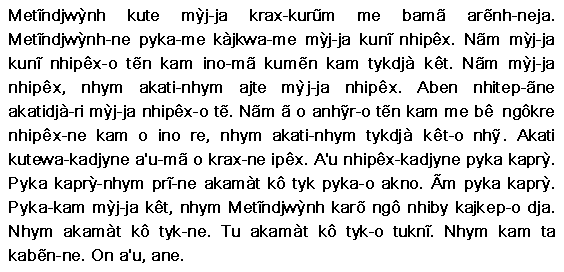The Kayapo language is called simply Kayapo, but it also has
an alternate name Kokraimoro. This language branch belongs to the Ge
linguistic family which is a branch of
the Macro-Ge trunk. The Kayapo take their language very seriously and they find
it as a highly valued social practice. They believe so highly in their language
that if others don’t speak their language they do not believe them to speak
anything quite as beautiful as them. And even though the Kayapo speak this
unique language there are only roughly about 7,100 people who actually speak
the language, these low numbers make a it a classified 6B endangered language
in the world. Which is unfortunate for
the people in the Kayapo tribe. The main reason for this loss of language is
the fact that many of the Kayapo people are learning the native language of
Brazil which is Portuguese, by learning this new language that is the norm they
are beginning to use it more and more which is thus wiping out the original
Kayapo language. This all depends though on the depth of isolation each tribe
experiences. I.E, if the tribe is set deep within the mountains they will all
only speak Kokriamoro, but if they live closer to the cities they will speak
more Portuguese which will cause them to lose the language faster.
Here is an example of a bible verse translated into the Kayapo language:
| ||||||



